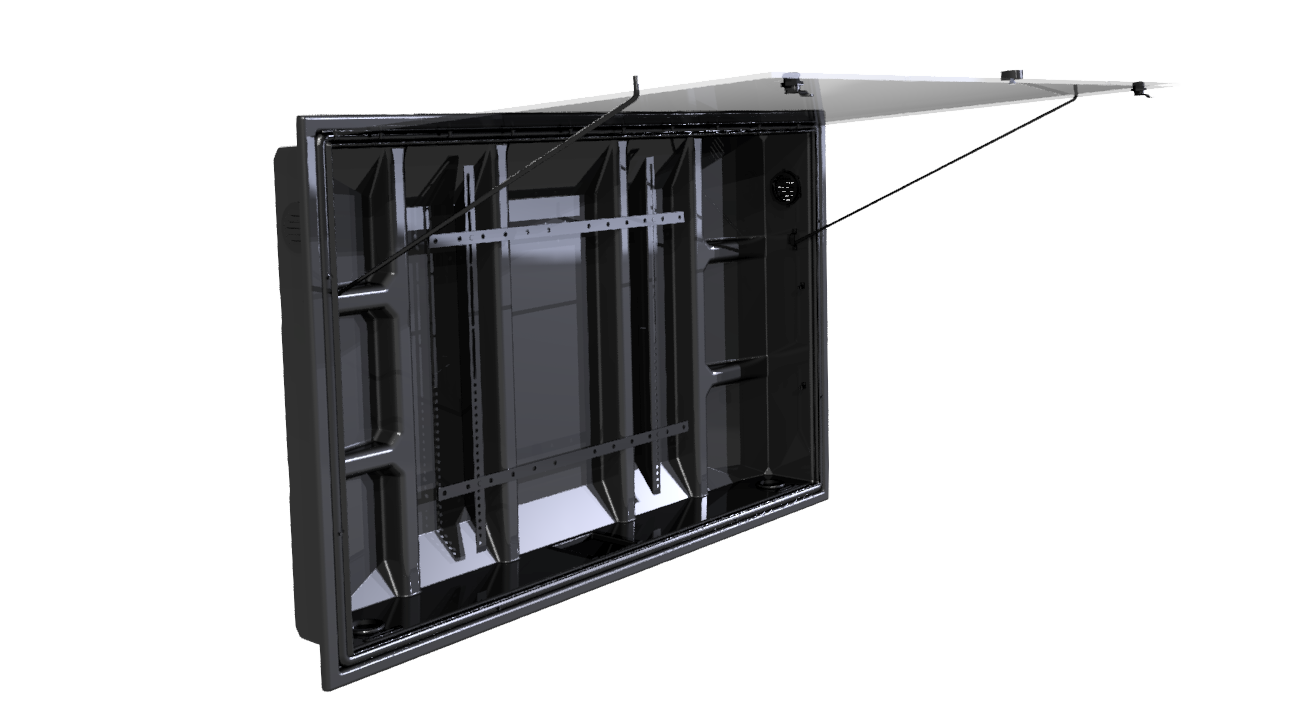Which TV Cabinet Material Is Best For You? The TV Shield
23rd Sep 2019
What's Better? Outdoor TV Cabinets vs Outdoor TVs
When you buy an outdoor TV cabinet, you have the expectation that it can stand up to whatever weather and debris challenges come its way. However, even though they’re all made for the outdoors, not all of them offer temperature regulation or can keep out bugs and moisture. In fact, one of the most important factors to keep in mind when looking at outdoor TV cabinet options is material – what materials comprise the enclosure.
Make no mistake that the material of the
cabinet has a lot to do with its function. Depending on where you live and what
specific climate challenges you face, you may find that buying a certain
material will give you the best protection and peace of mind.
Below are a few material features you’ll want
to consider before you buy.
Metal Outdoor TV Cabinet
One of the biggest advantages of a metal
outdoor TV cabinet is the abundance of size options. Metal is typically the
go-to choice for larger screens. It’s strong and durable, able to hold large,
heavy TVs, and looks attractive in every space. Metal enclosures typically
offer a sleek high-end look that other outdoor TV cases just don’t achieve.
However, given their robustness, metal cabinets also tend to be heavier. You may need a little help installing yours, but rest assured that when it’s up, it’s going to stay there.
Polymer Cabinets

Outdoor polymer (robust outdoor plastic) is a less expensive option compared to metal enclosures. They’re lightweight and easily installed, plus they’re easy to clean and take care of. HMWPE is the best outdoor TV enclosure polymer to look for. It is the same material used for slides on playgrounds and has over 20-year durability ratings. It is sturdier than other outdoor plastics found in some digital display and TV cabinets. And the best manufacturers not only use HMWPE but also reinforce the outdoor TV cabinet with strategic ribbing (Protective Enclosures Company’s The TV Shield outdoor TV cabinets are an example).
In addition, if you live on the coast or you’re mounting a TV in a boat or cruise ship, polymer is your best option. Polymer is best for avoiding saltwater air corrosion that can damage TVs and metal display enclosures. Just because an outdoor TV box is advertised as being weatherproof polymer doesn’t mean all of it’s parts and pieces are truly ideal for handling moisture and saltwater air, so make sure you choose a cabinet that specifies it is safe for those applications or inquire with the seller. Your TV cabinet will stay looking and working like new under salty conditions while providing quality protection to the unit.
Wood TV Cabinets
Wood TV cabinets look great when they’re new, but there’s a reason why manufacturers don’t use wood materials for weatherproof TV case production. Wood cabinets just don’t last as long when they’re outside.
Wood is susceptible to moisture damage, even when painted and finished. It won’t stay looking like new for long and could put your TV investment at risk.
Weatherproofing and UV Coating
Any metal outdoor TV cabinet should be labeled as “outdoor rated.” This certifies that the materials can withstand UV rays, blazing temperatures, and moisture, all of which pose threats to your electronics.
If your TV cabinet is made from metal, such as steel, look for a protective powder coating that will avoid corrosion, chipping, fading, scratches, and other defects. The steel and aluminum The TV Shield PRO features a protective powder coat that you can paint to match any decor or style.
Front Panel Materials
Some outdoor TV cabinets have solid dark plastic front covers that must be removed every time in order to watch TV, which isn’t ideal. On the other hand, better quality options offer clear but extremely durable front panels so you can leave the front panel on all the time, even while watching TV. Avoid front panel options like that would break too easily. A proven ideal solution for weatherproof TV cabinet front panels is guaranteed not to crack, thick, shatterproof ultra-clear grade Lexan® polycarbonate (the same material used in bullet proof glass, racecar, and spacecraft windshields). It is not shatter-resistant, but shatterproof, unlike the cheaper safety glass used in other protective TV cabinet options.
Final Outdoor TV Cabinet Verdict
Regardless of whether you choose a HMWPE or metal outdoor TV cabinet, rest assured that both hold big advantages over a weatherproof TV. The cost difference is often a number one critical consideration. A metal or polymer outdoor TV enclosure will save you significant dollars. A weatherproof TV can easily set you back $4,000 or more depending on size and other accessories. Plus, most weatherproof TVs would still need other additional protection to combat security and weather issues.
Outdoor TV cases allow you to choose which TV or display you want to put outside, which means you could use one you have or choose the latest technology unlike the limited technology available in outdoor TVs. If the screen does get damaged on an outdoor TV, you’re facing the cost of replacing the whole expensive TV as opposed to just the minimal cost of replacing a front panel. Yet another benefit of a quality outdoor TV box instead of a weatherproof TV is the advantage of being able to house media players like Roku or Apple TV behind the TV within the enclosure and protect them from the weather as well.
An outdoor TV cabinet provides a worry-free, all-in-one solution for your existing TV for a fraction of the cost. Explore our line of weatherproof TV enclosures today and enjoy the experience!

